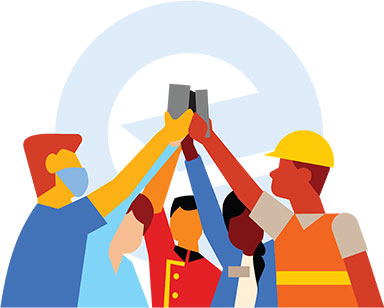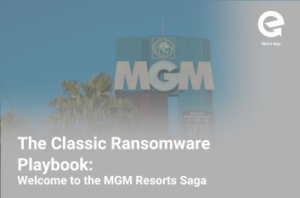Do you find yourself glued to a desk with a company-issued computer, buried in a flood of emails, and surrounded by digital tools? Welcome to the “knowledge-worker bubble,” where connectivity and communication seem abundant. But let’s shift our focus to the other side of the workforce, where a significant percentage of employees are still waiting to have their basic communication needs met.
The Knowledge-Worker Bubble: Addressing the Needs of the Majority
If you’re reading this, chances are you’re familiar with the “knowledge-worker bubble” – that cozy space where desk-based employees thrive. With their computers, @company.com email addresses, and an array of digital tools, they enjoy seamless communication and easy access to information. However, this bubble encompasses only 30-40% of the workforce, leaving a significant portion out in the cold.
Beyond the comfortable realm of desk jobs, there lies the remaining 60-70% of the workforce – the front-line employees, and the non-desk workers. They lack the same digital connectivity and find themselves waiting for their basic communication needs to be met. This divide between the knowledge workers and the front-line employees is a significant challenge in today’s workplaces.
Bridging the Gap: Recognizing the Unique Needs
For knowledge workers, technology aims to enhance existing processes and foster incremental improvements in communication. Their goals revolve around collaboration, cross-functional communication, and email management – all seeking efficiency and optimization.
However, the front-line and non-desk employees have yet to experience the same level of digital integration. Their needs are different; they are still waiting for fundamental communication tools. The demand is simple: tools that enable real-time conversations with non-desk workers, the ability to engage front-line employees like never before, and a platform to access crucial work-related information on mobile devices.
Addressing these needs is crucial. When front-line workers lack essential communication channels, they become disconnected, stressed, and make uninformed decisions that adversely impact productivity and safety. Ineffective communication leads to poor employee engagement, increased turnover, and costly mistakes.
Empowering the front-line Workforce: Embracing Technology Solutions
The good news is that the rise of smartphones, now owned by 74% of US adults, is offering a lifeline to the front-line, front-line, and non-desk workforce. Innovative tools like Red e App are revolutionizing communication, bridging the digital gap between knowledge workers and their front-line counterparts.
Embracing these technology solutions is not a luxury; it is a necessity for organizations seeking success. Communication is a powerful driver of retention, productivity, and overall performance. Investing in technology to meet the basic communication needs of front-line workers is long overdue. They deserve the same digital connection that desk-based employees often take for granted.
By empowering front-line workers with efficient and effective communication tools, organizations witness incredible transformations. Engagement soars, safety improves, and productivity reaches new heights. When everyone is on the same page, working cohesively toward shared goals, it propels the entire organization forward. The proof is in the numbers!
It’s time to burst the knowledge-worker bubble and embrace inclusive communication that brings everyone together. front-line workers play a vital role in the success of any organization, and investing in their communication needs is an investment in the company’s future prosperity.
In conclusion, recognizing and addressing the value gap in communication is a pivotal step toward creating a thriving and cohesive workforce. Technology has evolved, and it’s time to extend its benefits beyond the knowledge-worker bubble. By empowering front-line and non-desk employees with the same digital connectivity, organizations can unlock the true potential of their workforce. Improved engagement, productivity, and retention await those who bridge this communication divide and embrace a more inclusive and connected workplace. The choice is clear – it’s time to close the value gap and usher in a new era of communication and success.


